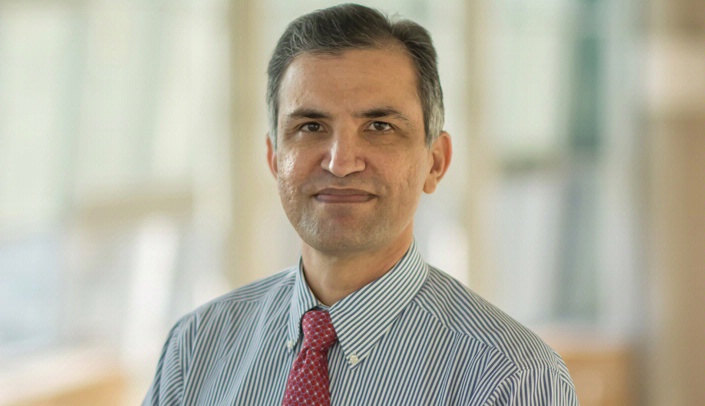Ventilators were invented to assist people who need help breathing.
That’s good.
But we have known for a while that there are unhealthy effects of ventilator support on the lungs, which can lead to short-term and long-term lung consequences, particularly in infants and children.
That’s bad.
Joby Varghese, M.B.B.S., assistant professor of anesthesiology, is part of a local effort in a national movement to have patients breathe on their own as soon as possible, without ventilators.
Dr. Varghese and team, in clinical research at UNMC and clinical practice at Children’s Hospital & Medical Center, have championed immediate extubation — that is, getting patients off the ventilator immediately after surgery.
“This is a means to improve outcome after heart surgery,” Dr. Varghese said. “It was introduced to cardiac anesthesia practice for children in our community in 2007.” He noted the practice extended to small infants, including newborns, in 2009.
It was a novel move, Dr. Varghese said, as it’s not considered standard practice outside of Children’s.
“This is an important clinical initiative, which has not yet been adopted by many centers based on real or perceived additional risk,” agreed collaborator Shelby Kutty, M.D., Ph.D., associate professor of pediatric cardiology.
The team’s study, published in a recent edition of the journal Annals of Thoracic Surgery, found that immediate extubation led to a greater than 34 percent decrease in time spent in the intensive care unit (ICU). ICU expenses also were found to have been decreased by more than 20 percent.
These impressive results were realized even after taking the kids off ventilators before the termination of anesthetic care.
And though the patients studied had a median age of seven days, the researchers found no significant difference in the probability of having to put the patient back on the ventilator.
“Our findings show that, with careful anesthetic and surgical practices, many infants can safely breathe on their own immediately, even after this very complex operation,” said James Hammel, M.D., associate professor of pediatric cardiothoracic surgery and co-principal investigator.
But it took a series of changes and performance improvement measures on various aspects of operating room and ICU management, and improved workflow in order to suit the new vision.
Close collaboration between anesthesiologists, surgeons and intensivists — and other clinical staff — helped make it work.
The team’s experience with immediate extubation was presented at the annual meetings of the Pediatric Academic Societies in 2015 and the American Association for Thoracic Surgery in 2016.

Interesting! Strong work Dr Varghese.